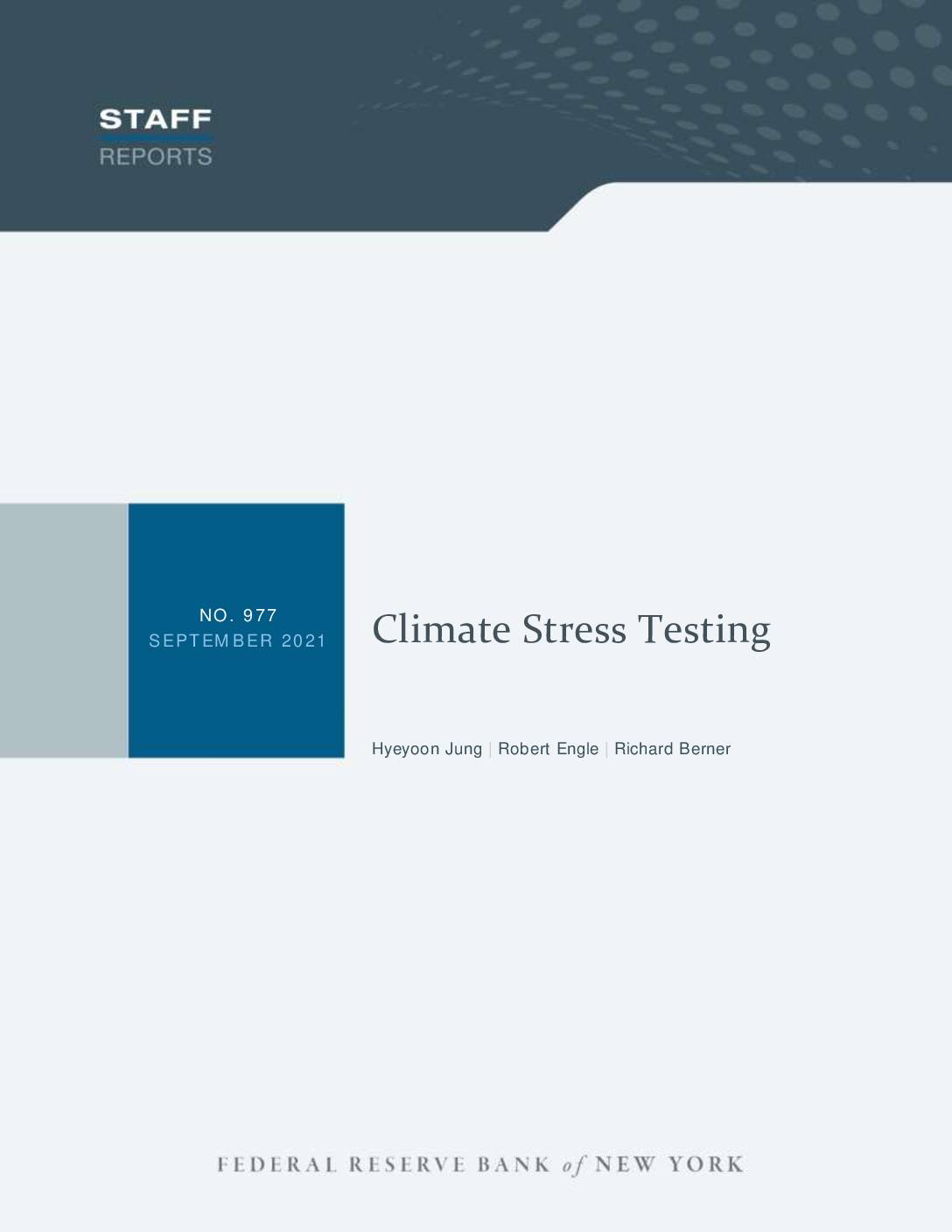The Federal Reserve Bank of New York (‘FRBNY’) develops climate stress testing capabilities to assess the resilience of financial institutions to climate-related risks and further understand systemic climate risk exposure across financial sector. Network for Greening the Financial System (‘NGFS’) climate scenario analysis practices are considered as 27 large global banks with aggregate oil and gas loan market share exceeding 80% are subject to a stress scenario which follows the energy price collapse of 2020 resulting in a 50% drop in the return on stranded asset portfolio over six months.
The FRBNY developed a measure known as CRISK to estimate the expected capital shortfall of a financial institution in a climate stress scenario. CRISK is a function of transition risk, climate beta of a financial institution, firm size, leverage and expected equity loss conditional on climate stress. Stressed and Non-Stressed CRISK is depicted below for select banks.
Link to resource Download sourceShare this

Sectors: Cross cutting, Finance
Country / Region: United States
Tags: Banks, citizens, climate predictions, climate risks, economic capital, energy, energy pricing, equity, global climate, Industry Regulators, Institutional Investors, loans, National Regulators, risks, SMARTER, stranded assets, Supranational RegulatorsIn 5 user collections: Green Home Investment Platform – Industry Regulators , Green Home Investment Platform – National Regulators , Green Home Investment Platform – Supranational Regulators , Green Home Investment Platform – Institutional Investors , Green Home Investment Platform – Banks
Knowledge Object: Web Resource
Author: The Federal Reserve Bank of New York: Jung, Hyeyoon; Engle, Robert; Berner, Richard
